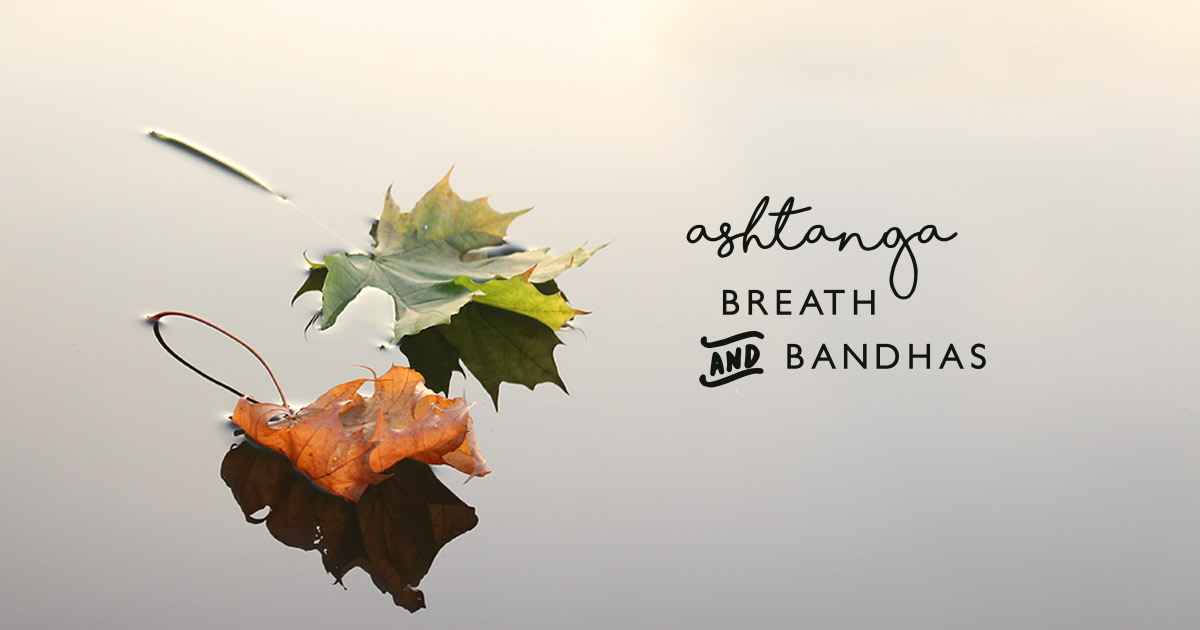Ashtanga Breath and Bandhas: The core principals that underpin the practice of ashtanga are the combined use of a steady, regular ujjayi breath, muscular energy locks called ‘bandhas’, the connecting of breath and movement and the steady point of focus known as ‘drishti’.
In this article we are going to focus on the yogic breath and bandhas of the ashtanga practice.
Ashtanga Breath and Bandhas
Ujjayi: Victorious breath
When done properly, Ujjayi breathing should be both energizing and relaxing. In the Yoga Sutras, Patanjali suggests that the breath should be both dirga (long) and suksma (smooth). The sound of Ujjayi is created by gently constricting the opening of the throat to create some resistance to the passage of air. Gently pulling the breath in on inhalation and gently pushing the breath out on exhalation against this resistance creates a soothing sound—something like the sound of ocean waves rolling in and out (or perhaps Darth Vader breath! ).
Once Ujjayi breathing is mastered, the challenge is to maintain the same quality of breathing throughout your complete asana practice. Focusing on maintaining both the length and smoothness of the breath as much as possible. Once you find a baseline Ujjayi breath in your foundation poses, endeavor to maintain this quality of breath throughout the practice.

Bandhas
In a straight-up modern, western sense, the bandhas help you regulate and control all of your internal systems: hormonal, sexual, metabolic, digestive, and more. Mula Bandha: in Sanskrit ‘mula’ means ‘root’.
Quite simply think of it as the lock that allows your energy to flow up, not down and out. If your energy is forced to flow up and stay inside of you, it will grow exponentially. It leaves you with that amazing feeling of ‘floating’ as you walk out of out of class. It will also allow you to float into your class. As an engaged Mula Bandha allows you to be lighter on your limbs and thus, lighter on your mat, keeping your practice safe and strong.
Uddiyana Bandha: Upward flying lock
Uddiyana Bandha is practiced by pulling the abdomen inwards and upwards after exhalation. When accessing this Bandha, the abdominal muscles press the organs into the abdomen, against the wall behind the organs and next to the spinal column. Instead of letting the lower abdominal region push out as you exhale, concentrate on keeping the area between the pubic bone and the navel drawn in toward the spine. In asana practice, the contraction of the abdominal muscles stabilizes the core of the body and protects the spine.



Leave A Comment